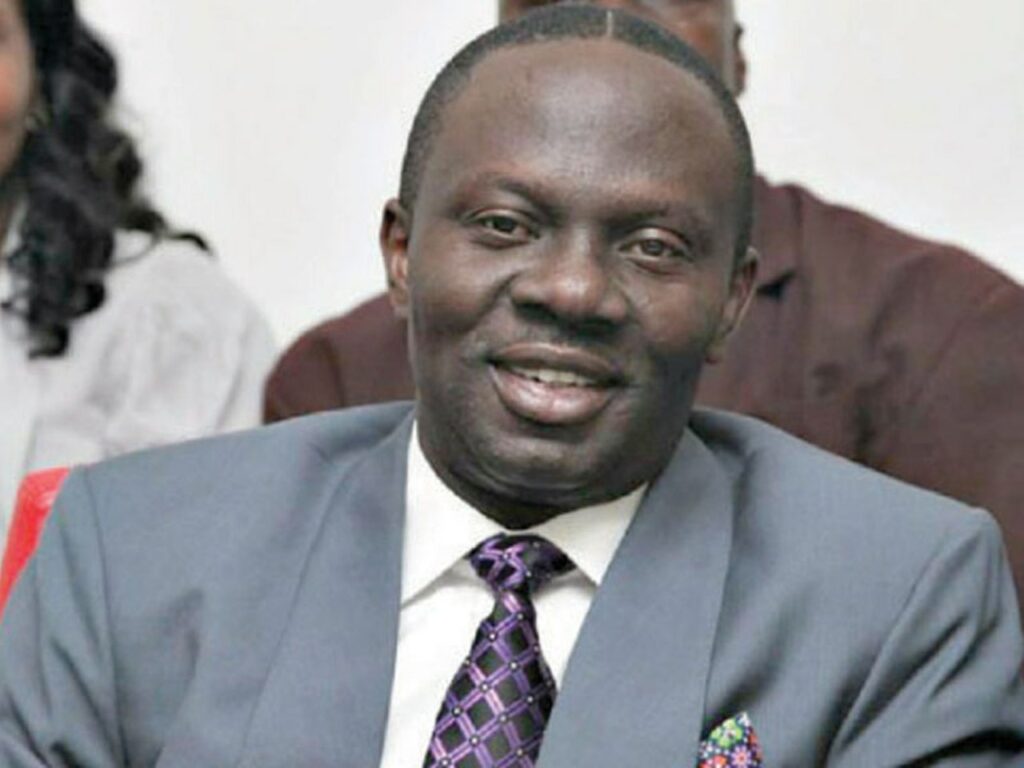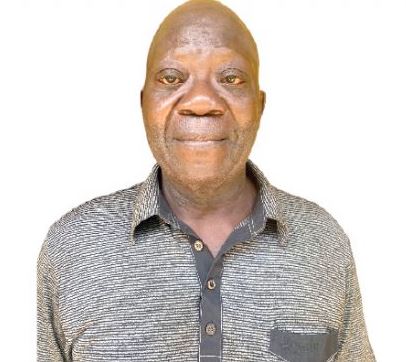Stage 3 and a tax system rigged for the rich
Sam Hawley: Come July we’re all set to get a tax break and lower and middle income earners will be getting a bit more now after the government’s re-jig of the Stage 3 cuts. But does that really make our tax system fairer? Some experts say it still favours the rich and much bigger change is needed. I’m Sam Hawley on Gadigal land in Sydney. This is ABC News Daily.
News audio: The Prime Minister is breaking an election promise by redesigning the Stage 3 tax cuts.
Andrew McKellar, CEO of Australian Chamber of Commerce and Industry: Mark down the 24th of January 2024 as the death of tax reform in this country.
Anthony Albanese, Prime Minister: When you have cost of living pressures on lower and middle income workers then you have a responsibility to do something about it.
Graham Perrett, Labor MP: If we can move it from the millionaires to the middle, you know, that’s not a bad thing.
Kristen Sobeck: My name is Kristen Sobek and I’m a research fellow at the Tax and Transfer Policy Institute based at the Australian National University.
Sam Hawley: Kristen, you’re a tax expert and tax really tends to get people worked up, doesn’t it? And there’s been a lot of controversy over these Stage 3 tax cuts. Hardly surprising, I suppose…
Kristen Sobeck: I think the Stage 3 tax cuts are so controversial, or tax cuts taxing three increases, because as a society we all disagree a bit in terms of what we consider fair. And we also have differences in opinion with regard to what’s rich and what’s poor. So I think contrast in values and perceptions are what drive a lot of this emotional reaction.
Sam Hawley: So what’s your verdict then on Labor’s changes to Stage 3?
Kristen Sobeck: Well, Sam, I appreciate that you use the word changes instead of tax reform, because what I think these are not is tax reform. From my standpoint and those of the colleagues with whom I work at the Tax and Transfer Policy Institute, what we view the Stage 3 tax cuts as are really a tinker to the system.
Sam Hawley: All right, well, let’s get to that tinkering or what further changes could be made in a moment. But there’s no doubt that we all really like a tax cut, but then there’s the counter argument, isn’t there, that there’s so much pressure on things like hospitals, aged care, that they need extra funding. So can the government actually afford this tax cut?
Kristen Sobeck: Well, I think they can if they had used this opportunity as a way to enact broader tax reform. At the moment, the way we’re looking, is Australia a high or low taxing country? It kind of depends on the reference. If we look to our counterparts geographically in Asia, Australia is a relatively high taxing country. It collects about close to 30% of GDP, gross domestic product, in tax revenue. But relative to a lot of other countries in the OECD, it’s a relatively low taxing country. But to your point, when we look at ongoing debates, what we see is that Australians are demanding we want more and better services. With all of these demands, it’s inevitable that we are going to have to increase that tax take. The question is how we do it. One way would have been to enact the stage 3 tax cuts as legislated, and then tackle broader sources of inequality within our broader tax system through other types of taxes, namely taxes on savings, of which part is land.
Sam Hawley: Okay, so let’s get a bit more stuck into that in a minute. Let’s have a bit more of a look at the tax system as it stands then. Famously, the businessman Kerry Packer said once that anyone who doesn’t minimise their tax wants their heads read.
News audio: I am not evading tax in any way, shape or form. Now, of course I am minimising my tax, and if anybody in this country doesn’t minimise their tax, they want their heads read, because as a government, I can tell you, you’re not spending it that well that we should be donating extra.
Sam Hawley: So he’s pointing out that you can kind of get around tax if you’ve got a good accountant…
Kristen Sobeck: That’s right. In practice, what we know is that individuals that are below income are not necessarily those who have low taxable incomes. And those at the top, those high income individuals, don’t necessarily, as a result of what he was pointing out, pay as much tax as those at the bottom. Indeed, what we know is those at the very, very top pay a fair bit less tax than those at the top, middle and sometimes the bottom as well.
Sam Hawley: Right. So how are people avoiding having to pay tax?
Kristen Sobeck: Well, what we know is this comes from two sources. So they’re able to minimise tax at the top through one channel and through different channels at the bottom. So I’ll talk about the top a bit and then talk about the bottom of the income distribution next. So at the top of the income distribution, what we know is that individuals who have lots of income often have very diversified sources of income. So you have some who may just work for one employer and have all of their income in wages. If you have wage income, it’s very, very difficult not to pay all of your income tax on that. However, if you’re a self-employed individual or if you have a lot of investment income, it’s very, very easy to use other types of structures such as partnerships, companies and trust, and even combine them all to exploit differences in tax rates available to companies. So it’s a lower 25 or the 30 per cent tax rate or to exploit the different tax free thresholds available to different family members. So if you will, people at the top with more diversified forms of income can use different structures and different family members to minimise their tax. Now at the bottom, when we say low income individuals, I make the distinction between individuals who have low incomes and individuals who have low taxable incomes. If I talk about low taxable income, we would have a single mum who’s doing it tough, who’s perhaps in public housing, working as hard as she can and she’s paying her income tax. You can appreciate she has a lot of expenses because she’s raising some little ones all by herself. She doesn’t own her own home. She’s doing it tough. And at the same time, you might have a retired person who’s drawing down on a very generous superannuation fund. Let’s think of them as a lawyer. They’re living in a multi-million dollar home that they own. And they happen to work a few hours a week at a very high hourly rate. These two individuals, even though their actual incomes and levels of wealth are dramatically different, will actually pay the same amount of income tax.
Sam Hawley: Wow. Oh my gosh. Okay, well that doesn’t sound fair.
Kristen Sobeck: No. No it doesn’t. And so in part, this is I guess a third point that a lot of the Australian public, we need to do a better job at educating the population about these types of loopholes or realities of our tax system.
Sam Hawley: Yeah, so let’s then return to that topic of what other taxes there could be, I suppose, to make things a bit fairer.
Kristen Sobeck: So when we look at what other OECD countries are doing, Australia stands out a bit in its reliance on personal income tax. And by nature of this tax minimization at the top and the exemptions on what actually is taxable income at the bottom, what we see in Australia is that Australia is relying heavily on personal income tax. And in addition, the individuals who are paying that income tax tend to be between the ages of 30 and 59. So not only are we relying on one tax really, really heavily, but it’s a very narrow sliver of the population that’s doing a lot of the heavy lifting. So working age families. So when I visualize the tax system, if you will, the population is kind of spread out across the bottom. It’s like our tax system is one really tall, slim Jenga tower that’s about to topple. So what could we do instead? Well, we should be relying more heavily on these other tax bases. So importantly, land and land is quite important because people don’t normally just sell their property when you increase the tax by a little bit. They kind of cop it, pay the pay the tax and move on. But in addition, land, as many people will know who are trying to buy a house or who own a house, has appreciated tremendously over the course of the last 20 years in particular. So this is actually land housing. It’s really where a very, very large stock of individuals and families wealth is contained. So as to go back to my earlier example about the retiree with low taxable income and our single working mum, if we were taxing real estate, this retiree would now be paying more tax in accordance with his or her level of wealth relative to the single mum, who chances are does not own a home.
Sam Hawley: But there’s already a tax isn’t there on property when you sell it. So what are you saying that that should be increased and by how much do you think?
Kristen Sobeck: Well, one way is to tax individuals when they sell it. But what economists and myself in this club would prefer is what we would call a general broad based land tax. So instead of waiting till someone sells it, we would charge people an annual tax every year on their property. What we see is that the tax rates on different types of assets vary tremendously across Australia. So for example, one of the highest tax, highly taxed types of savings is actually interest in a bank account. By contrast, on the other hand, you have occupied housing that you pay a bit of stamp duty up front and then you never pay tax ever again. So what this creates is a system where, as you might imagine, individuals who are relatively low income, not low taxable income, but actually low income, if they have any savings, they’re likely to put that savings in a bank account. One of the most highly taxed forms of savings. By contrast, someone who’s a bit more secure with a higher income, who can afford to put away some savings and not touch them for a while, can build up their nest egg, invest it in something that’s more preferentially taxed, like a home, and earn even more wealth. So wealth begets wealth in our current system of savings taxes in Australia.
Sam Hawley: Okay. All right. Well, tell me, Kristen, of course, it’s really easy for governments to give tax cuts because voters really like tax cuts, but it’s pretty hard to change an entire tax system. So what’s the likelihood of any of the changes that you’ve discussed actually happening?
Kristen Sobeck: I’d like to say a very high likelihood, but in reality, I’m not sure this government has the political capital or the political courage to enact them. The Jenga Tower that I spoke about is getting increasingly narrow and going to topple. So we really need to think about redesigning our tax system in a more equitable way, because at the moment, it really is not the personal income tax where a lot of the inequality is. It really is everything outside of the personal income tax system that’s driving that inequality.
Sam Hawley: Kristen Sobeck researches tax policy at the ANU’s Crawford School of Public Policy. We explained the stage three tax cuts on Monday and had a look at whether the cost of living will get any easier this year. That episode’s called Tax Cuts and Your Bills in 2024, and that’s in your feed. This episode was produced by Bridget Fitzgerald and Nell Whitehead. Audio production by Sam Dunn. Our supervising producer is David Coady. I’m Sam Hawley. Thanks for listening.




